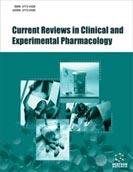Abstract
Background: Assessing analgesic drugs developed over preceding 50 years demonstrated that very intensive efforts directed at diverse molecular pain targets produced thousands of PubMed articles and the introduction of more than 50 new analgesics. Nevertheless, these analgesics did not have a sufficiently broad spectrum of action and level of effectiveness to demonstrably affect the use of opioids or nonsteroidal anti-inflammatory drugs for the treatment of pain. Analgesics in current are only modestly effective in chronic pain (at least with respect to neuropathic pain), and the widespread application of mu-opioid receptor agonists for this purpose culminated in the global “opioid crisis”. The introduction of every new drug is regarded as an important success, at least initially. Assessing the merit of a new analgesic is extremely complicated.
Objective: The aim of this article is to describe an approach that combines very different categories of drug evaluation – multifactorial approach for the assessment of new analgesics. It is based on conclusiveness of clinical trials, novelty of a drug’s molecular target, a drug’s commercial appeal, and the interest in a drug reflected by scientometric indices.
Results: This approach was applied to analgesics developed in 1982-2016. It shows that although several new agents have completely novel mechanisms of action, all newly approved drugs, and drug candidates, demonstrated the same persistent problems: relatively low therapeutic advantage over previous treatment and narrow spectrum of use in different types of pain, compared to opioids or NSAIDs.
Conclusion: The use of the suggested multifactorial approach to drug assessment may provide a better view of the whole spectrum of analgesics advantages and disadvantages.
Keywords: Acute pain, chronic pain, migraine, molecular targets, pain syndromes, scientometrics.
[http://dx.doi.org/10.1213/ANE.0b013e3181cde882] [PMID: 20185657]
[http://dx.doi.org/10.1016/S1474-4422(14)70251-0] [PMID: 25575710]
[http://dx.doi.org/10.7326/M17-0865] [PMID: 28761945]
[http://dx.doi.org/10.1213/ANE.0000000000002500] [PMID: 29049121]
[http://dx.doi.org/10.2147/JPR.S67479] [PMID: 25187736]
[http://dx.doi.org/10.1016/j.janh.2019.03.001] [PMID: 31400836]
[http://dx.doi.org/10.1016/j.tips.2017.12.005] [PMID: 29358009]
[http://dx.doi.org/10.1016/B0-443-07287-6/50040-0]
[http://dx.doi.org/10.1016/j.coph.2013.09.017] [PMID: 24565006]
[http://dx.doi.org/10.1097/SPC.0b013e328345bb7e] [PMID: 21455071]
[http://dx.doi.org/10.1007/164_2019_336] [PMID: 31820179]
































